Sarnath is one of the major pilgrimages for the Buddhists for this is the place where Lord Buddha gave his first sermon. Someone once told us that each and every stone of Sarnath is steeped in history. This spiritual destination near Varanasi was originally known as Isipathana. We had already explored a part of Varanasi when we decided to make a day trip from Varanasi to Sarnath and explore the place of Lord Buddha.
In this blog, we are going to share our experience about our trip from Varanasi to Sarnath, what are the places that you can visit in Sarnath and also about the small skirmish we had with our auto rickshaw driver.
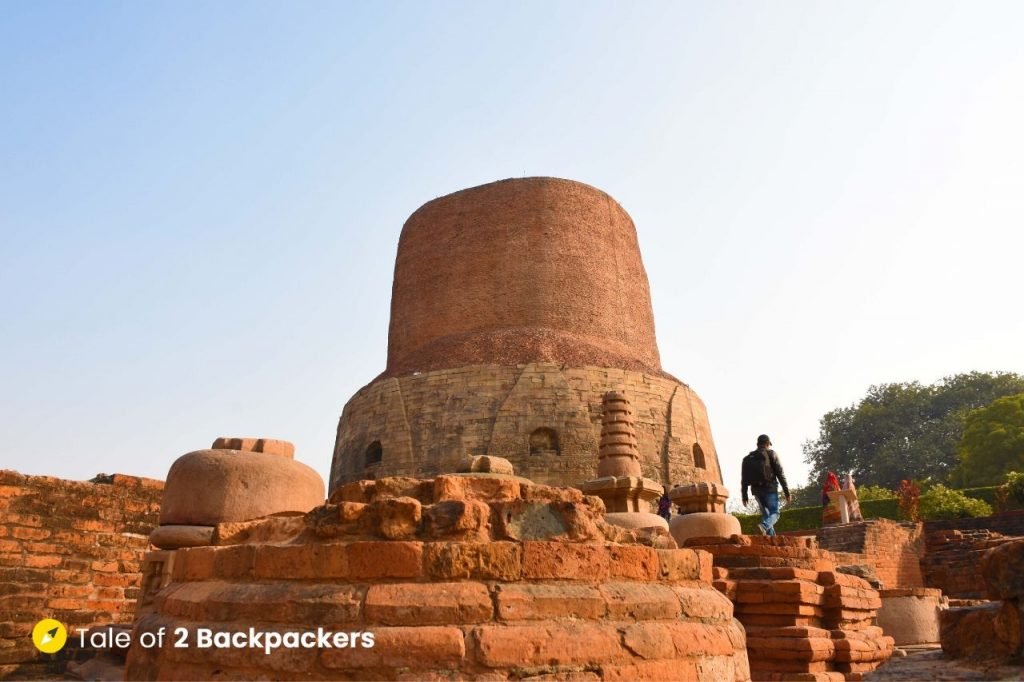
Sarnath – The History
It is true that Sarnath is full of history. Each and every corner of the place seems to tell a story. Located about 10 km from Varansi, Sarnath has a strong influence of Buddhism. The stupas, especially the magnificent Dhamekh Stupa, the various Buddhist temples and monasteries emphasize that importance of Buddhism in Sarnath.
After all, Sarnath is one of the four places that are associated with the life of Gautam Buddha. It is the place where Lord Buddha delivered his first sermon, also known as Dharmachakrapravartansthala after he attained enlightenment at Bodh Gaya. He decided to preach to his five disciples first. At Sarnath, Lord Buddha proposed the Four Noble Truths, which forms the essence of Buddhist teachings.
After this, Sarnath emerged as the centre of Buddhism and Lord Buddha established the first Buddhist Sangha here at Sarnath along with his 5 disciples. Later he sent those 5 disciples to different directions to preach the tenets of Buddhism.

Sarnath was originally known as Sarangnath, which means “The Lord of the Deer”. Sarangnath is another name for Lord Shiva. After all, Varanasi is known as the original land that Lord Shiva and Devi Parvati created. So Sarnath was also known as the land of Shiva before Lord Buddha arrived.
Almost 200 years after the Mahaparinirvana of Lord Buddha, King Ashoka built several stupas at Sarnath. He had also erected a pillar that is now known as the Ashokan Pillar and can be seen at the Sarnath Museum. During the Sunga period, a number of pillars were erected as well. During the reign of Kanishka, many Bodhisattva statues were built. The most beautiful ones were erected in the Gupta period.
Most of the historical account of Sarnath can be found from the accounts of the Chinese travellers Fa-Hein or Faxian who visited India during the 4th century AD and Hiuen Tsang or Xuan Zang, who visited India during the 7th century AD. With the increase of Buddhism in China, these explorers visited the land where Lord Buddha lived.
When Xuan Zang visited Sarnath, the place was a thriving centre of Buddhism with 1500 monks living there. But Buddhism went into decline after the Muslim invaders ransacked the city. Sarnath went into oblivion. It was only in 1835 when British archaeologists again found the lost city of Sarnath amidst rubbles and mounds.

Archaeological Excavations in Sarnath
Sarnath has been one of the most important historical sites in India and has been in the attention of many scholars and archaeologists. One of the first accounts of excavation was in 1794 by Jonathan Duncan. He had recorded the discovery of 2 urns by Babu Jagat Singh of Banaras. Jagat Singh was apparently digging a mound to obtain bricks for construction when he found the two urns and a marble box containing gold, silver, pearls and rubies and even a few bones. These were found near a sculpture dated 1026. Jagat Singh had discovered treasures!

The first formal excavation at Sarnath was done in1815 by Colonel Colin Mackenzie. However, the major successful excavations were done by Alexander Cunningham from 1834 to 1836. He had excavated the main stupas of Sarnath along with the remains of the monasteries. He had excavated a large number of statues, inscriptions, votive stupas, panels and many more. All these artefacts can now be seen in the Archaeological Museum.
The main religious complex at Sarnath was discovered by Friedrich Oertel excavated the main shrine between 1904-05 and discovered the religious centre of the complex at Sarnath. The Ashokan Pillar and several statues of Buddha were excavated by him.
In 1907-08, Sir John Marshall had taken up the excavations and the remaining monasteries were found out. He also found the remains of a “hospital” near the main shrine.
The last major excavation was started in 1921 by Daya Ram Sahni. He had discovered a number of structures between Dhamekh Stupa and the main shrine as well as a number of passageways.
Sarnath Tourist Map
Take a look at this Sarnath Tourist Map and plan your exploration accordingly!
Places to see in Sarnath
While the ancient stupas, statues and edifices are found all around Sarnath, recently a number of Buddhist temples were built following the architectural styles of Thai, Burmese, Korean and Chinese temples. These temples give a unique perspective to this ancient town. Here are a few places that you can visit on your trip from Varanasi to Sarnath.
Sarnath Buddhist Complex

The Sarnath Buddhist Complex is the main archaeological complex in Sarnath. The main attraction of the complex is undoubtedly the colossal Dhamekh Stupa. There are, however, a few other stupas, monastery sites and other relics found all around the complex. Visit the Sarnath Buddhist Complex was one of our main reasons for our trip from Varanasi to Sarnath.
The remains of the ancient structures that can be seen today in Sarnath actually belonged to a period between the 3rd Century BC and 12th Century AD. Structures were built, they fell down, and sometimes another structure was erected over the broken one. So, all the structures in the complex obviously do not belong to the same time period.
Let us take you through the main structures and ruins inside the Sarnath Buddhist Complex.
Opening Time: Sunrise to Sunset
Entry Fee: Indian, SAARC and BIMSTEC citizens: Rs.5/- and others Rs.100/-
Dhamekh Stupa

Dhamekh Stupa or Dhamekha Stupa is the most famous monument in Sarnath. The massive stupa was originally built in 249 CE during the reign of Mauryan emperor Ashoka. With time, the stupa has undergone several additions and changes.
The Dhamekh Stupa stands as a solid cylindrical structure made of red bricks and stone having a height of 43.6 m and a diameter of 28 m. It is believed that Lord Buddha preached his first sermon after attaining enlightenment at this place. This famous event in the life of Lord Buddha is known as Dharma Chakra Pravartana or setting of the “Wheels of Law”. It is perhaps from the word “Dharma Chakra” that the word Dhamekh had evolved.
The place also marks the formation of the first ever Buddhist Sangh. Buddhist pilgrims from around the world visit the Dhamekh Stupa and circumambulate it and offer their prayers to Lord Buddha. It was evident from the remains of the intricate art work on the stupa that the structure might have had beautiful ornamentation and carvings.
YOU MAY ALSO LIKE: DIAMOND TRIANGLE – THE BUDDHIST HERITAGE IN ODISHA
When we visited the Dhamekh Stupa, we saw a number of Buddhists from Japan visisting the site. It was quite beautiful to see a group of pilgrims wearing the same coloured robe praying peacefully at the equally serene place. We sat down on the green lawn for some time soaking in the peace and calm. It was required after the little altercation we had with our auto driver. More on that, later.
Dharmarajika Stupa

It is believed that the original Stupa was built by King Ashoka in 3rd Century BC. The stupa was then enlarged at different times. This was, however, largely destroyed by Jagat Singh in 1794.
2 very beautiful statues of Buddha were excavated from the site of this stupa. Those are now found in the Archaeological Museum.
Main Shrine
A little north of Dharmarajika Stupa lays the main shrine. This shrine is totally in ruins today. Quite naturally, it used to be a grand structure in its heydays. The famous Chinese traveller and monk Hiuen Tsang had noted in his journal that the main shrine was almost 60m in height.
Ashokan Pillar

To the west of the main shrine is the remains of the Ashokan Pillar surrounded by a glass case. What remains of the pillar is the lower portion of the original 5.25 m high pillar crowned atop with the Lion Capital.
The Pillar has three inscriptions on it. The earliest one is the one in Brahmi script and is an Ashokan edict. In the inscriptions, the King warns the monks and nuns of punishment if they created a divide in the Sangha. The King wished to keep the Sangha united forever.
The second inscription is from the Kushan period and the third one is from from the earlier Gupta period.
Rectangular Courtyard

Between the Dhamekh Stupa and the main shrine lies a rectangular courtyard. There are a number of smaller shrines and votive stupas in this courtyard.
Panchayatana Shrine
The Panchayatana Shrine is located just south to the courtyard and looks like a Hindu Temple. The structure datyes back to the Gupta period
Monastery I – VII
There are 3 sites in the complex that is marked as monastery. Monastery I has an open courtyard and rows of cells on three sides. Monastery I probably belonged to 12th Century AD. Sir John Marshall discovered an underground tunner 55 m in length at this site.
Monastery II belonged to Gupta period and is about 30 sq metre in area. There are only traces of nine cells surviving today in this one.

Monastery III dates back to the Kushan period having a similar plan to Monastery II.
Monastery IV is not yet fully excavated. The exposed portion consists of some cells and the remains of a verandah.
There are other remains of monasteries around the complex. You can simply roam around and take a look at the ruins of these monasteries to get an idea of the period.
Sarnath Deer Park
The Deer Park is the place where Lord Buddha preached his first sermon at Sarnath and the place where the first Buddhist Sangha came into being. In ancient times, Sarnath was also known as Mrigadava, meaning a place where deer can roam around freely. Also, Sarangnath means the “Lord of Deer”. Sarnath has a deep connection with deer.
In today’s time, the Deer Park is a sprawling area in the Sarnath Buddhist Complex where a number of deer roam around freely. The Deer Park is a lovely place to visit, though we did not visit there.
There is a lovely Buddhist story about the former incarnation of Lord Buddha, when he was the king of the deer. It is so believed according to Buddhist fables that the place where the current deer park is located was once a forest. In the forest lived two deer Kings Devdutta and Bodhisattva with their respective clan of 500 deer each.
One day, the king of Kashi visited the forest on a hunting expedition. Bodhisattva, the king of one of the deer clan went to the king and told him, “Dear King! You set the forest on fire and killed my subjects with arrows. I request you to kindly permit me to send one deer every day so that you may get fresh and pure flesh, which would allow us to live for a little longer.“
The King was happy with the proposal and returned to the palace. Thus, every day, a deer was sent to the palace for sacrifice. One day, it was the turn of a mrigi (doe). She was from the herd of Devdutta and was pregnant. She went to Devdutta and said that she was ready to die, but her unborn child should not be harmed. King Devdutta was angry to hear this, but the mrigi said to Devdutta whether it was dharma to kill an unborn.
Devdutta was in a dilemma and shared this to Bodhisattva. King Bodhisattva, then decided to go to Kashi in place of the doe. He went to the King of Kashi and narrated the story of Mrigi to the King. The King of Kashi then realized his mistake and his lack of compassion and empathy. He not only freed Bodhissatva and ended this tradition of sacrifice; he also created a sanctuary for the deer to live in peace and without fear. That is why the forest came to be known as Mrigadav.
Mulgandha Kutir Vihara

The ancient Mulgandha Kuti Vihara is now in ruins and they can be seen from the Dhamekh Stupa. At the ancient site, there is a plaque that says probably Lord Buddha sat at the place for meditation. The ancient temple was perhaps made during the Gupta period. According to Xuang Zang, the height of the temple was almost 61 m.
The new Mulgandha Kutir Vihara is located right adjacent to the ruins of the ASI excavation site. Shri Angarika Dharampal, the Sri Lankan Buddhist was the founder of the Mahabodhi Society. The society built the new Mulgandha Kutir Vihara in 1931.
There is a beatific golden statue of Lord Buddha inside the temple.

The temple is best known for its beautiful frescoes created by the Japanese artist Kosetsu Nosu. He had previously worked on the frescoes of Ajanta Caves and made wonderful copies of the frescoes seen there. These frescoes inside the temple depict the life of Lord Buddha from his birth to the attainment of Nirvana. There is a huge bell in front of the temple.
A relic of Lord Buddha is enshrined in the temple. The relics were discovered by the Archaeological Survey of India (ASI) during excavations at Nagarjuna Konda in Madras and Taxila in Punjab (now in Pakistan). These relics were presented to the Mahabodhi Society during the period of British Governor-General Wellington. The relic is brought out during Buddha Purnima when thousands of Buddhist pilgrims visit the site to seek blessings.
Bodhi Tree

To the east of the Mulgandha Kuti Vihara, there is another complex with some Buddhist shrines. There is also a scene of Buddha giving his first sermon to his first five disciples recreated by a group of Burmese Buddhist devotees. The first sermon delivered at the Deer Park at Sarnath is written in both Pali script and English in front of the statues.
The statues are in front of a huge Bodhi tree. Legend has it that Emperor Ashoka’s daughter Sanghamitra visited the Bodhi tree at Bodh Gaya where Lord Buddha achieved enlightenment, and took a branch from there and planted it in Anuradhapura in Sri Lanka. The branch converted into a tree and from that tree, Angarika Dharampala took a sapling and planted it at this place in Sarnath in 1931. The tree now stands as a symbol of serenity providing shadow and respite to tired travellers.
Chaukhandi Stupa

Chaukhandi Stupa is another beautiful structure in Sarnath and was also declared as a monument of national importance by the ASI in June 2019. Chaukhandi Stupa is located just 600 m south of the main Sarnath Buddhist Complex.
The stupa is believed to be built at the place where Lord Buddha met his first disciple on his way from Bodh Gaya to Sarnath. The stupa is a lofty structure made from bricks having an octagonal tower on the top. The name “Chaukhandi” perhaps comes from the four-armed plan of the stupa.
Chaukhandi Stupa was mentioned in the writings of Hiuen Tsang. So as far as documentary evidence are concerned, this stupa was present during the mid-seventh century AD.
Excavations were done in 1835 and later in 1904-05 when the stepped terraces were discovered on the eastern side of the stupa. These structures date to the Gupta period between the 4th to 6th century AD. The excavations also led to the discovery of an image of Buddha seated in Dharmachakra-mudra, a Bodhisattva and a few other bas-relief structures.
The octagonal tomb on the stupa was erected much later and was commissioned by the Mughal Emperor Akbar in 1567 in memory of his father Humayun who had visited Sarnath in 1532. Akbar was known for his secularism and religious tolerance.

Chaukhandi Stupa is located a little away from the other main monuments of Sarnath. But the place is quite peaceful. When we visited, theer were hardly any people at the Stupa. Only a group of young boys and girls had climbed up to the octagonal tower and were taking selfies. From the Chaukhandi Stupa, you can also see the Garden of Spiritual Wisdom.
Vishwa Shanti Stupa

The Vishwa Shanti Stupa is located just 1 km south-east from the main Buddhist complex at Sarnath. It is also adjacent to the Japanese Buddhist Temple. The entrance to the Stupa is the replica of one of the gateways at the Great Sanchi Stupa. As you enter through the gate, you will also see the replica of the Ashokan pillars flanked by the lion capitals. The original ones are, however, in the archaeological museum.

The stupa was inaugurated in November 25, 2010 and is dedicated to the people of the world with the aspiration for a sustainable and peaceful planet. Well, the white stupa is definitely within a peaceful environment and looks quite marvelous.
Japanese Temple or Nichigai Suzan Horinji Temple

Nichigai Suzan Horinji Temple or the Japanese Temple is one of the many new temples in Sarnath. The temple is within a walking distance from the Dhamekh Stupa and looks like many of the aesthetically pleasing temples in Kyoto in Japan.
The interiors of the temple are beautiful and completely peaceful. There is a beautiful statue of Lord Buddha in a reclining pose. The statue reminded us of the Buddha statues we had seen in Yangon, Myanmar.

There was hardly anyone at the temple complex when we visited. It was such a peaceful place. Located a little away from the main road, the Japanese Temple and the Vishwa Shanti Stupa is the ideal place for calm and peaceful meditation.
Chinese Buddhist Temple
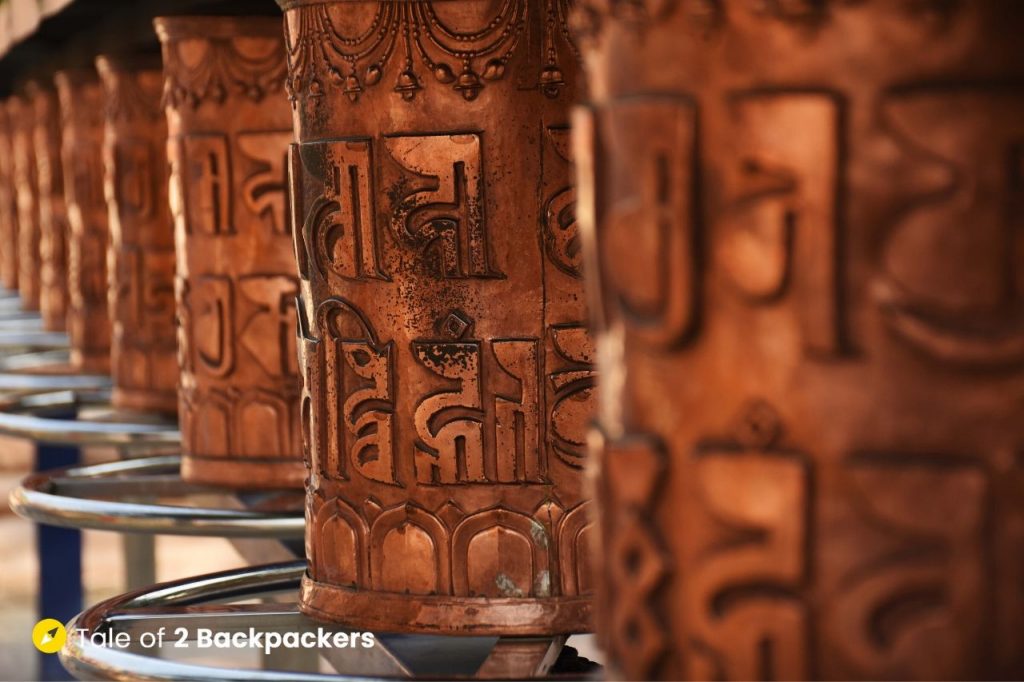
The Chinese temple is located about 600m east from the main entrance of the ancient Buddhist complex in Sarnath. The temple is simple in structure, but the place is extremely peaceful.
The Chinese Temple was built in 1939 by the abbot of Beijing Tao-Kai and the President of Eastren Asia Buddhist Association Fa-Yuan-Tsu. There is an information board in the temple complex showing the route taken by Hiuen Tsang who embarked on a journey towards India from China in 629 AD and travelled extensively in Northern India between 635 AD to 645 AD. He had documented his experiences in India in his journal which is a great historical source of information for scholars.
Inside there is a small statue of Lord Buddha in seating position. The entire complex exudes calm and tranquility. This was definitely one of the most beautiful places we visited in Sarnath.
Giant Buddha Statue and the Thai Temple

The Giant statue of Buddha completely mesmerized us. It is said to be the tallest statue of Lord Buddha in India. After seeing the beautiful frescoes at Mulgandha Kuti Vihara, we visited this place next. The colossal statue of Lord Buddha and the Thai Temple is located within 2.5 acres of a beautiful lush green garden with flowering plants and fountains.
The complex is located about 300 m south to the ancient Buddhist complex in Sarnath. The construction of the statue was started in 1997. However, the idea of the statue was the brainchild of Rasmi Sashan, a Buddhist monk from India and Prakash Samadhiguna. They had thought of building such a statue almost 27 years back. Work started in 1997, only to be stopped after 3 years. The construction work again resumed in November 2006.
The statue was finally completed and unveiled in March 2011. The estimated cost of building the statue was around two lakh fifty thousand Pounds and the money was donated by Buddhist devotees and other people all around the world.

The impressive and imposing statue stands at a height of 25m and its beauty is enhanced by the fountain in front of it and the beautiful garden surrounding it.
At one corner of the garden stands the Thai Temple. This beautiful small red temple is known as the Hinayana Buddha temple and also as Wat Thai Temple by the Thais. The Thai Temple was built in 1933 by Thai dignitaries. The temple is surrounded by a number of statues of Lord Buddha. There is a statue of laughing Buddha and the statue depicting Lord Buddha preaching his first sermon to his followers.
The Thai Temple is one of the most visited places in Sarnath after the main archaeological complex in Sarnath. The place is quite beautiful.
Tibetan Temple or Lhaden Chenmo Tibetan Monastery

The Lhaden Chenmo Tibetan Monastery, also known as the Tibetan temple is located about 600 m south-east from the ancient Buddhist complex at Sarnath. The monastery was built in 1955 and is the first monastery and temple to be built in India by His Holiness Dalai Lama, XIV.
The entrance of the monastery is flanked by carvings of two lions. Once you enter the complex, there is a pink coloured stupa. It has been built by the Tibetans to show their gratitude to the Indian Government for granting them asylum in India. The main temple is beyond this stupa. There are some beautiful frescoes adorning the walls of the temple. Inside, there is a huge statue of Sakyamuni Buddha, in a resting position.

It is possible to stay overnight in the monastery next to the temple by paying a small donation. We definitely wish to stay at this place the next time we visit Varanasi and explore Sarnath more at our will.
Archaeological Museum, Sarnath
The Sarnath Archaeological Museum is a treasure trove of Buddhist artifacts. There are many statues and idols of Buddhas and Bodhisattvas along with other valuable treasures. The Lion Capital from the Ashokan Pillar is also placed inside the Museum. The Lion Capital is the National Emblem of India.
The Museum remains open from 10 AM to 5 PM and remains closed on Friday.
Our Trip from Varanasi to Sarnath
After watching Subah-e-Banaras at Assi Ghat and having a sumptuous breakfast of Kachori and Sabzi, we decided to go for a trip from Varanasi to Sarnath. We looked for an auto and after a bit of bargaining, we zeroed on to one. The auto would take us to Sarnath, take us around the place and bring us back to Varanasi.

We took the road from Varanasi to Sarnath and finally reached our destination. The auto stopped in front of the Mulagandha Kuti Vihar first. We explored the place and visited the famous Bodhi Tree just adjacent to the place. After this visit, the auto driver took us to a place where there were a few guides. One of the guides approached us and offered his services. We did not want to take a guide with us, but he was quite insistent. Instead of Rs.100 that he asked first, he now agreed to guide us for Rs.50. I felt a little bad and agreed to take him on. I thought that might be the tourist season is lean and an Rs.50 will not quite break my bank.
But little did we know that the problem with guides were elsewhere. He took us to the Buddha Statue and Thai Temple and told us a few stories (things that we already knew). Then he suddenly asked us whether we would like to see some weavers in Sarnath. I have a keen interest in handloom and so I wanted to go there. He took us to a small room where a person was weaving. And then he took us to a saree shop. That’s when we understood that he was waiting for his commission when we buy something from the shop.
YOU MAY ALSO LIKE : BANARASI SILK SARI – THE PAST, PRESENT & FUTURE
We did not buy anything and came out. Well, he did look a bit disappointed. Then we arrived in front of the Sarnath Buddhist Complex. He told us a bit about the place and informed us that the tour has ended! We were a bit confused. Our auto driver also said that after the Complex and the Museum, we would return back to Varanasi.
That was the last straw. I got really angry. Agni would not say anything, but I had to yell at the auto driver that if he did not take us to the rest of the places, we would not pay him a single penny and he can simply leave us at Sarnath and go. We would find some other means of transport to return.
After a bit of disagreement, we decided to leave the auto. We paid him half the amount decided and explored Sarnath on our own. I think that was the best decision we made. Not only we explored the place in peace, we also did not have to look at our watch every now and then.

Sarnath is basically a compact place and almost all the monuments and temples are within a short distance from each other. You can highly walk around and explore the place.
Our trip from Varanasi to Sarnath was a beautiful one, inspite of the little problem we had. We explored the place at our own pace and enjoyed each moment spent there. We, however, could not visit the Burmese Buddhist Temple and the Museum.
How to reach from Varanasi to Sarnath?
Sarnath is located only 10 km from Varanasi. From Varanasi, you can hire an auto or car for a day trip to Sarnath. If you are getting a random auto from the road, we would suggest you to talk to him about the places he would take you and the rate beforehand. Or else, you might face the problem we did.
Where can I stay at Sarnath?
There are a few hotels at Sarnath, if you wish to stay there. The Tibetan Monastery also offers place for staying for tourists against donation. Otherwise, you can stay at Varanasi and make a day trip to Sarnath.
How to commute within Sarnath?
You can hire an auto for going around Sarnath. It is a small and compact place and all the attractions are located within a short distance. You can also walk around to explore the place.




Did you like this blog? If you found this article useful, please share it your you family, friends, neighbours and anyone you like to. Please share your thoughts about Sarnath by commenting below.
Pin this for a later read!



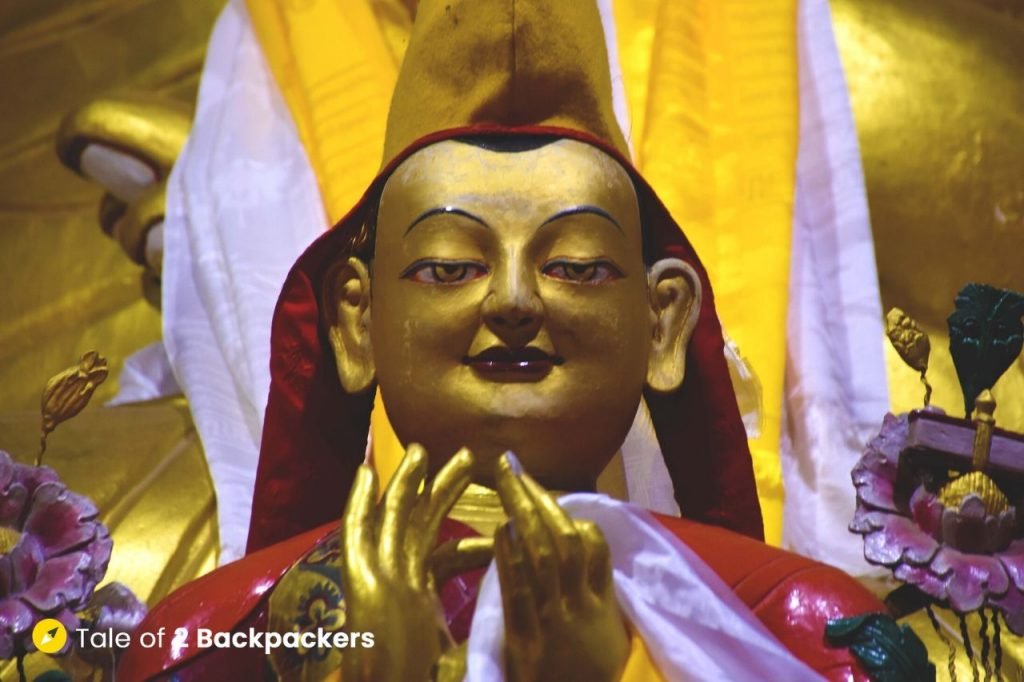

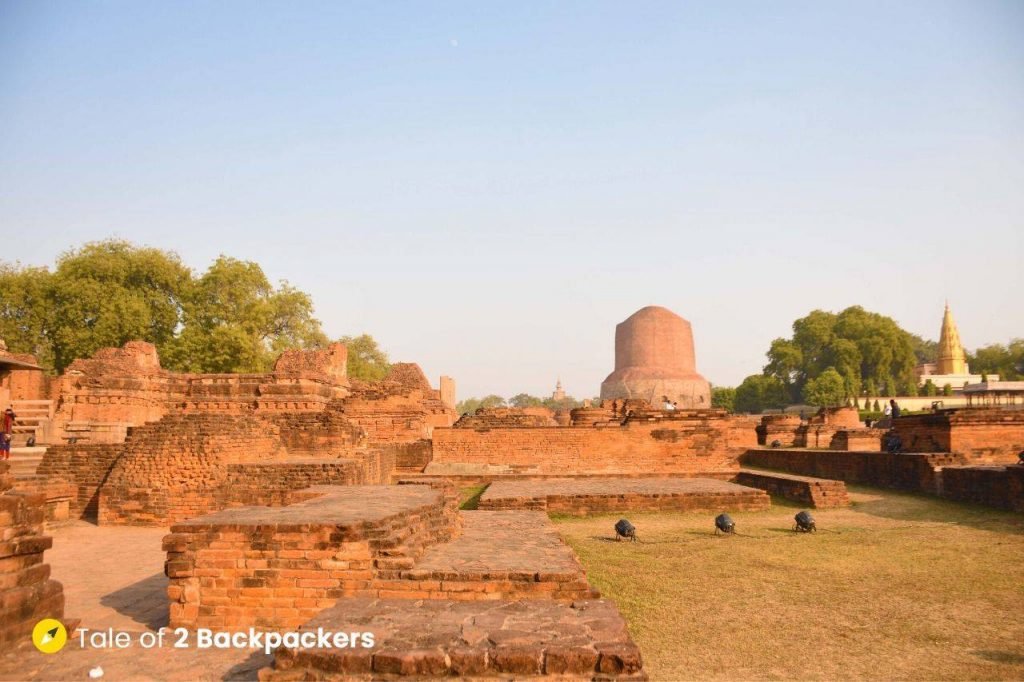


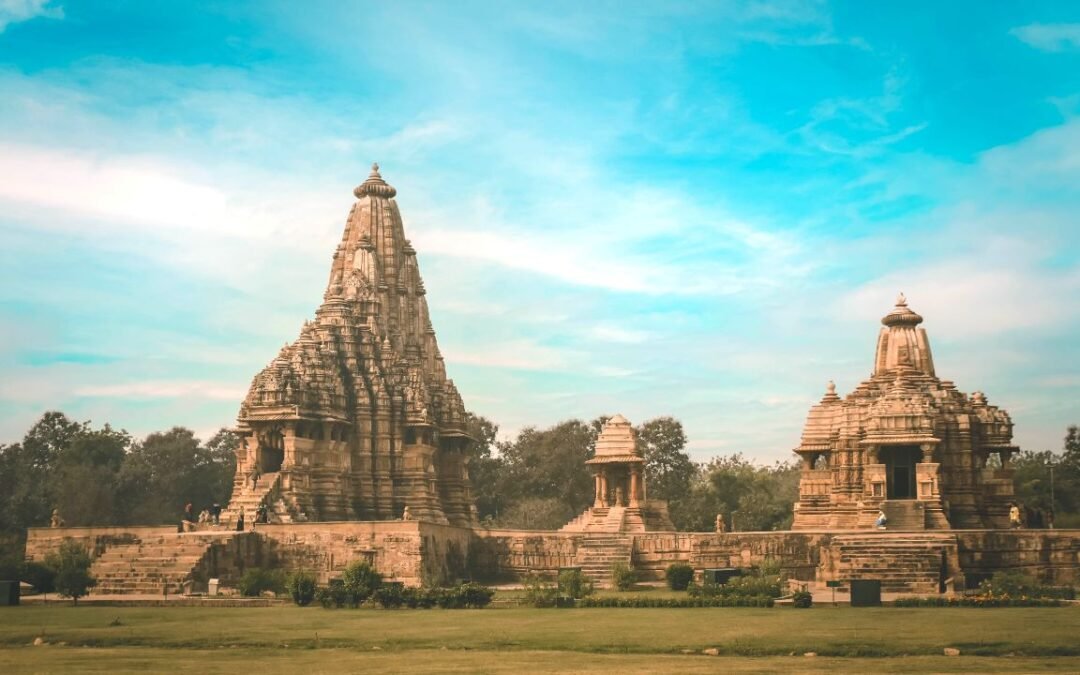




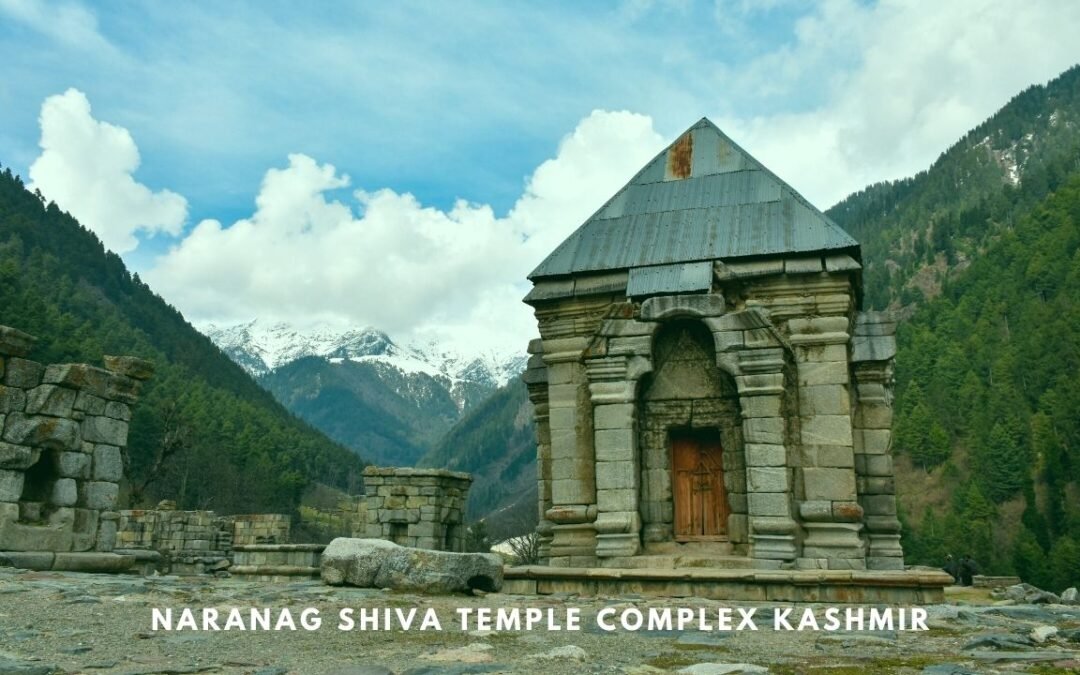

0 Comments